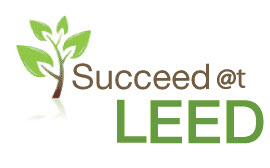If you’re managing a LEED project, one of your first challenges will be getting your team to think a little differently about how the LEED project team works together and how the LEED building project is managed. On a typical building project your design team may get together in a room with the client, talk about the client’s goals, objectives and project needs — and then once the project is kicked off, everyone seems to scatter and go off and do their own thing. The mechanical engineer focusses on the HVAC needs. Your landscape architect is busy doing land surveys and designing the landscape. Your electrical engineer gets started identifying the electrical and indoor and outdoor lighting needs for the project. Team members only seem to get involved with one another on an as-needed basis.
With a LEED project, you need to take a totally different approach. LEED projects require that you create an integrated design from day-one of the project. In fact, the ultimate success of your LEED project truly depends on managing your LEED project with an integrated design approach.
So what exactly is “integrated design”? An integrated design approach means that your team collaborates together right from the beginning of the project. In typical building projects, the design process does not try to identify synergies or optimization among the various disciplines and team members. Decisions are often made by fewer people and in isolation. One of the main benefits of an integrated design approach is that it allows your team to develop synergies that will not only help you create a better building for your client, but it will also increase the likelihood of you achieving your LEED credits and certification. Synergy like this allows the various disciplines to optimize the building design and decisions can be made together to ensure that they work collectively to achieve the various credits you are trying to achieve.
Life cycle costing is also emphasized in an integrated design. Life-cycle costing is a way to assess the total building cost over time, taking into consideration initial costs, operating costs and maintenance costs. You’ll also want to take in the social and environmental benefits of the LEED project when evaluating life-cycle costing.
In a traditional project, systems are considered in isolation. A successful LEED projects require your team to think of the WHOLE building and all of the systems together as they’re working on the LEED project.
Even though an integrated-design approach requires more efforts at the front-end – a lot of time and energy will be invested upfront early in the design phase where you have maximum flexibility to impact the design and coordinate everything with your LEED goal objectives. Integrated design is one of the keys to completely a successful LEED project.
Here are some great LEED Project Management Books:


2 Comments
Leave a reply →